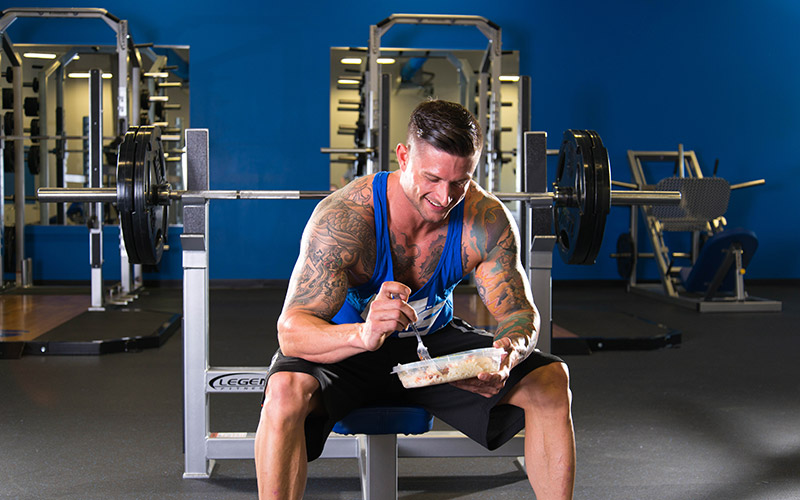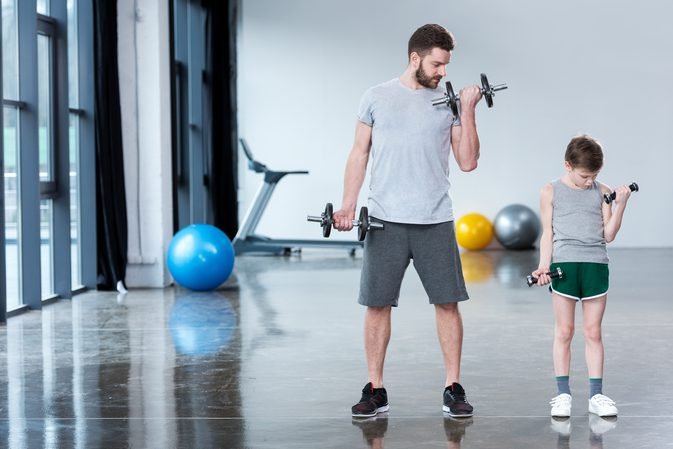We’re going to take a closer look at the idea that you should consume protein within 30 to 60 minutes following a workout, this is the so-called anabolic window.
Where did this myth come from?

So for a long time bodybuilders have consumed protein powders or high protein foods after the train and the theory says that since weight training is a damaging process to muscle creating micro-tears. Then it makes sense that you should repair that muscle and flick on the anabolic switch as it were as quickly as possible after training. Now taken to the extreme, some bodybuilders will argue that if you miss your protein feeding within that hour after your workout then you more or less wasted that entire workout because you miss the anabolic window. The anabolic window has found its place and the scientific peer-reviewed literature has a legitimate hypothesis.
In 2002, lemon and colleagues spoke of a limited anabolic window of opportunity for a post-workout anabolism. In 2013, review from IV and Ferguson made a big deal out of nutrient timing. Suggesting that when carbs and protein are ingested in the minute’s post-exercise glucose and amino acids initiate the shift to an anabolic state. The authors recommend getting your post-workout nutrients in within 45 minutes of training and this is based on a good chunk of evidence they cited a total of 134 papers in their review. So maybe there is something to this myth after all.
Where did it go wrong?

Well, the very same year the IV paper was published in the american journal of lifestyle medicine. Brad Schoenfeld, Alan Aragon, and Jim Krieger published a meta-analysis analysing 20 studies that met a strict inclusion criteria and behold after crunching all the data it turns out a quote small to moderate effect was seen for protein timings on lean masking. However, what changed the game was a sub analysis which showed that the majority of the hypertrophic differences noted in the timing studies, including many of those in the IV review could be explained entirely by princes in total daily protein intake.
So basically many of the studies touting a positive effect of nutrient timing simply had the subjects in the post-workout group eating more total protein for the day. This led the authors to conclude that the results would seem to refute the commonly held belief that the timing of protein intake and the immediate pre and post workout period is critical to muscular adaptation. There is a little bit more to it than that we’ve known as early as 1997 that weight training alone results in a long-lasting elevation in muscle protein synthesis for at least 48 hours after training.
The figure from a 2014 review out of McMaster University. This chart shows that resistance training stimulates a prolonged elevation of muscle protein synthesis that can remain elevated for at least 48 hours after training. The initial spike in sensitivity to amino acids appears to be about two and a half to three hours, much broader of a window than the previously proposed 45 minutes.
In 2017 paper, the interval for protein intake may be as wide as several hours or perhaps more after a training bout depending on when the pre-workout meal was consumed. This is an important point if amino acids are still in the system from the pre-workout meal the specific timing of the post-workout meal is clearly of less critical importance and for this reason Schoenfeld and others have proposed that there’s a roughly four to six hour window around the training session.
For some more clarity on this, a 2017 position stand from the International Society of Sports Nutrition recommends post exercise ingestion of protein immediately to two hours following training but they also suggest that the pragmatic recommendation is to feed as soon as possible after the workout. Since not eating doesn’t offer any benefit forever trophy.
The anabolic window is that people view it as exact we that a window that’s closing and once it’s closed after a half an hour an hour two hours. Then you missed that opportunity for games but we know it simply doesn’t work like that. We know that weight training Prime’s the muscle to be more sensitive to amino acids for at least 24 to 48 hours after training and in the context of sufficient total daily protein intake. The specific timing of post-workout protein matters much less and rather than think of post-workout anabolic signaling as an on/off switch where you can either flick it on within that first hour following training or it just remains off.
We like to instead think of it as a sort of turns out. Where you can turn it up to varying degrees based on how you dose and how you time your protein feedings but if you happen to miss time or under dose them. A little bit you can still get that dial turned most of the way up and still make a great deal of progress.
IN THIS POST -:
Scientific References:
https://www.ncbi.nlm.nih.gov/pubmed/2…
https://www.ncbi.nlm.nih.gov/pmc/arti…
https://www.ncbi.nlm.nih.gov/pmc/arti…
https://www.ncbi.nlm.nih.gov/pmc/arti…
https://www.ncbi.nlm.nih.gov/pubmed/2…
https://www.ncbi.nlm.nih.gov/pubmed/2…
http://journals.sagepub.com/doi/abs/1…
https://www.ncbi.nlm.nih.gov/pubmed/1…



